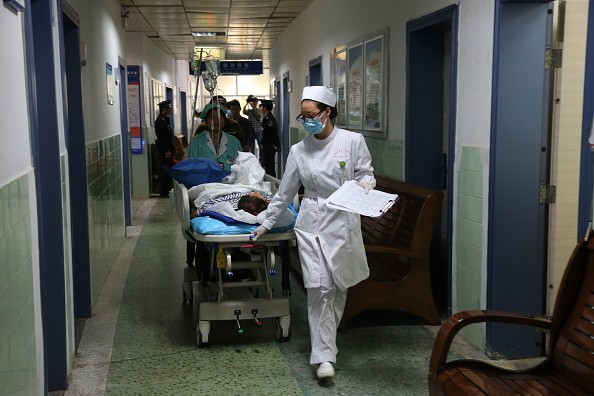All top-level hospitals in eastern China’s Jiangsu Province will stop treating outpatients with antibiotic drips starting July 1 next year, according to the Jiangsu Health and Family Planning Commission.
Prescription antibiotic drips are to be prohibited in all of the province's Level 3 hospitals, the highest level in China, as part of the government's campaign to overhaul the clinical use of antibiotics, the commission said.
Outpatient departments in these hospitals will stop providing such treatments altogether by the end of 2016, although inpatient and emergency departments will continue the use of antibiotic drips for adults.
"This confirms the national health authorities' determination to crack down on clinical antibiotic abuse that is leading to rising levels of antibiotic resistance across the country," Peng Qingyu, professor of health economics at Shandong University, told China Daily on Wednesday.
In Jiangsu's capital of Nanjing, around 200,000 patients receive antibiotic drips annually in Level 3 hospitals, accounting for 10 percent of all inpatient treatments, according to the state-owned Xinhua News Agency.
In a recent survey conducted by the World Health Organization (WHO) in several countries, people are confused about the threat posed to public health by antibiotic resistance and do not fully understand how it can be prevented.
"The rise of antibiotic resistance is a global health crisis, and governments around the world now recognize it as one of the greatest challenges for public health," WHO Director General Margaret Chan said in the survey report.
"Antibiotic resistance is compromising our ability to treat infectious diseases and undermining many advances in medicine," she added.
In China, the survey, which polled 1,000 people, revealed that 57 percent had taken antibiotics within the past six months and 74 percent of those were prescribed or provided by a doctor or nurse.
More than half mistakenly believed that they should stop taking antibiotics once they felt better, while 61 percent thought that colds and flu could be treated by antibiotics.
"Antibiotic drips have been very popular since I was a child," said Luo Changyuan, 52, director of a county-level clinic in eastern China's Anhui Province. "It takes effect much sooner than pills. People cared more about how fast they could get recovery, rather than the side effects of the antibiotics."
The Anhui provincial health department released in August the previous year a list of 53 diseases that do not require antibiotic treatment and asked clinics and hospitals to cut down the number of drips used on inpatients by 25 percent within the year.
Reducing antibiotic drips is more challenging in rural areas because most patients there are not seriously ill but still want a fast recovery, said Luo.
According to the National Health and Family Planning Commission, an estimated average of 138 grams of antibiotics was used per person in mainland China in 2010, nearly 10 times that of the United States.
The commission's statistics also indicate that 70 percent of inpatients and 50 percent of outpatients in China are prescribed with antibiotics. In Aug. 2014, the commission launched a nationwide system to report cases of antibiotic-resistant bacteria at large public hospitals nationwide.
"Hopefully, when large hospitals are able to successfully control the use of antibiotics, they will set an example for grassroots institutions," Peng said.



























